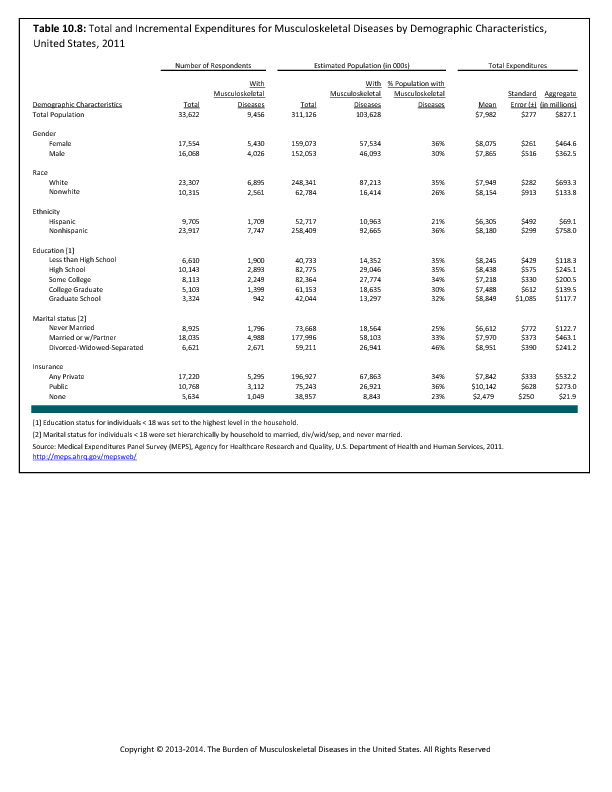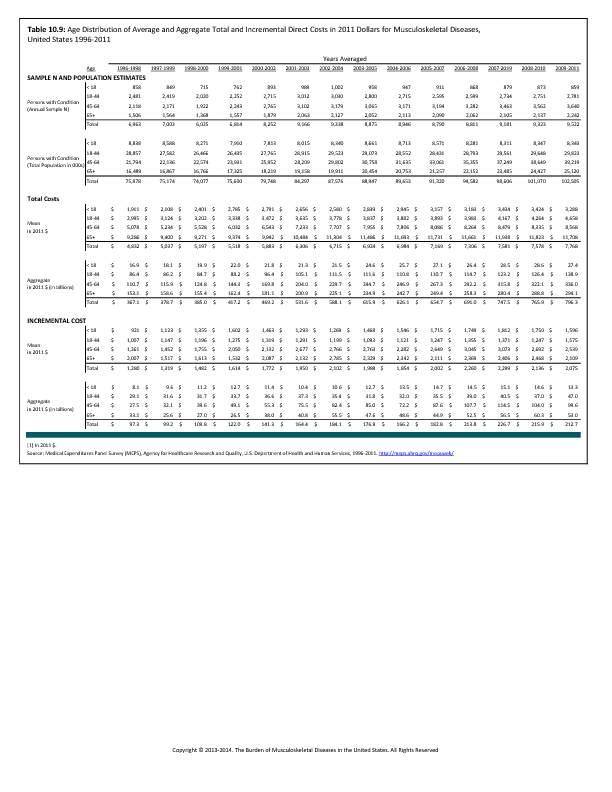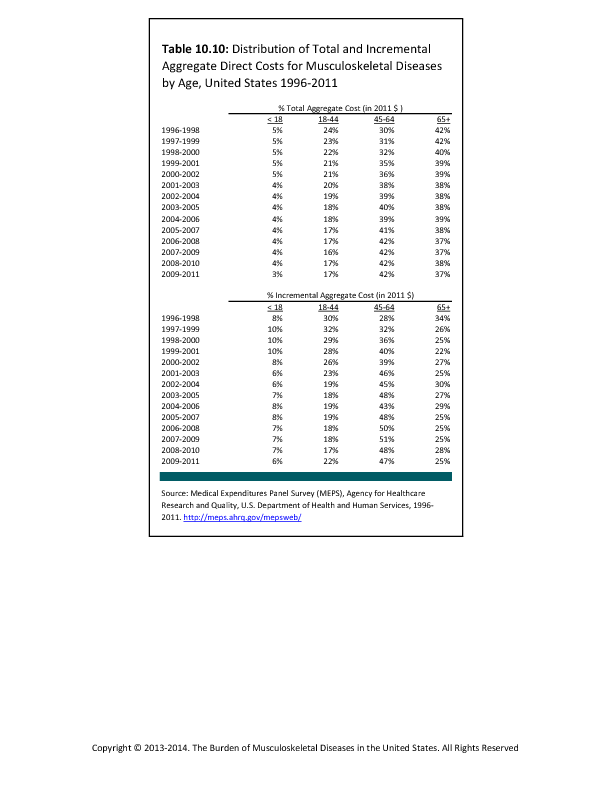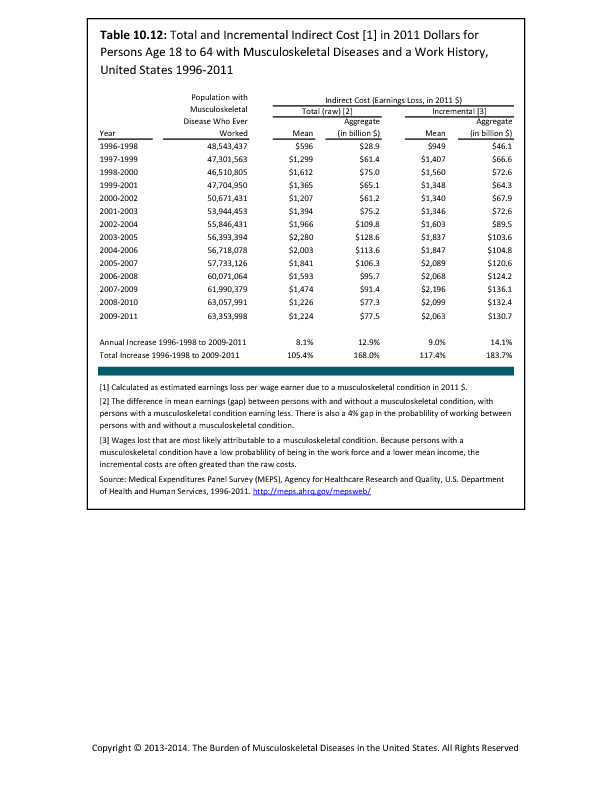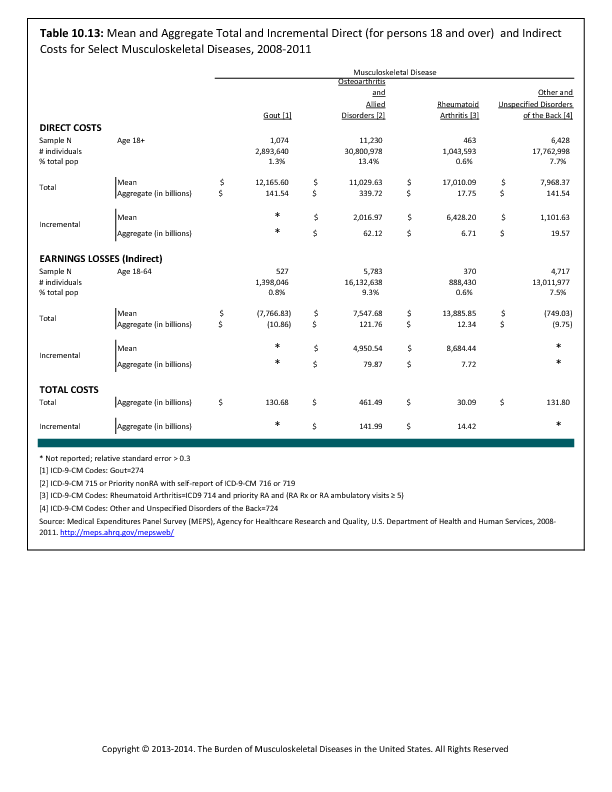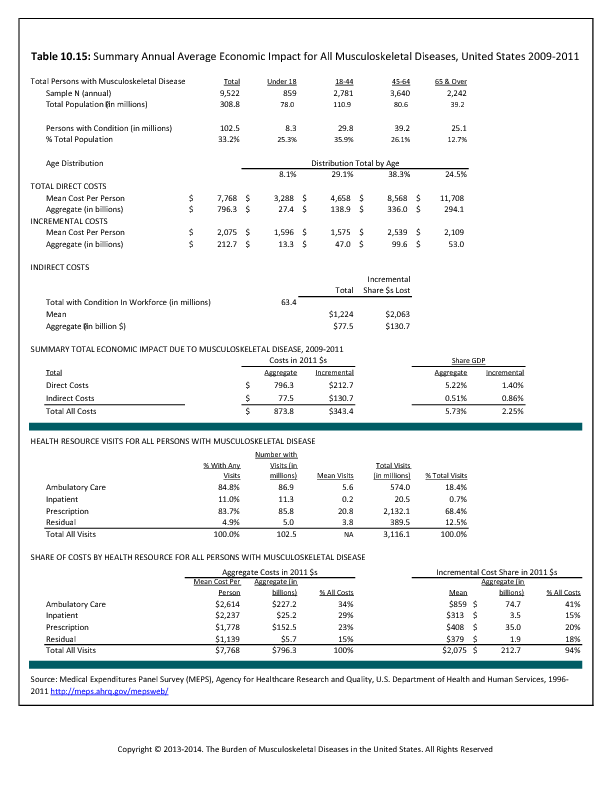The economic impact of musculoskeletal diseases is increasing due to a combination of factors. These factors include:
• The aging of the US population
• The concomitant increase in the prevalence of musculoskeletal diseases
• The growth in average total expenditures to treat musculoskeletal diseases
• The average total and incremental earnings losses that result from these conditions (although there was a dip in the total aggregate earnings losses associated with the recession)
Between 1996 to 1998 and 2009 to 2011, the number of persons with one or more musculoskeletal diseases grew from 76.0 million, or 28.0% of the population, to 102.5 million, or 33.2% of the population. Over this time period, average total expenditures for health care for persons with a musculoskeletal disease grew from $4,832 to $7,768 in 2011 dollars, while aggregate total expenditures grew from $367.1 billion to $796.3 billion. Average incremental expenditures for persons of similar characteristics but without a musculoskeletal disease grew from $1,280 to $2,075, but due to population growth and increased prevalence of the conditions, aggregate incremental expenditures grew from $97.3 to $212.7 billion, all in 2011 dollars.
Average per-person earnings losses between 1996 to 1998 and 2009 to 2011 due to musculoskeletal diseases increased from $596 to $1,224, while aggregate total earnings losses grew from $28.9 billion to $77.5 billion in constant 2011 dollars, even after a dip in earnings associated with the recession. Incremental earnings losses increased dramatically, from $949 to $2,063 per person and from $46.1 to $130.7 billion on an aggregate basis.
Comparing the cost of musculoskeletal diseases to the national gross domestic product (GDP) provides a perspective on these total costs. Earlier estimates summarize the evidence from the studies conducted by Dorothy Rice and colleagues, the last two of which were from prior editions of the present study.1,2 More recent comparisons for 1996 to 1998 through 2009 to 2011 summarize the data from the present analysis in 2011 constant dollars. Notwithstanding the different methods of the studies by Rice and colleagues and the analysis of MEPS from the present volume, there is no question that the direct cost of musculoskeletal diseases has a profound economic impact on the nation, now at 5.73% of GDP, or nearly doubling in less than two decades.
- 1. The National Arthritis Data Task Force concluded that about half of the increase between the 1972 and 1980 studies by Rice and colleagues was due to improvements in the data sources available to Rice and colleagues, but the remainder represented a real increase.
- 2. Lawrence R, Helmick C, Arnett F, et al: Estimates of the prevalence of arthritis and selected musculoskeletal disorders in the United States. Arthritis Rheum 1998;41:788-799.
Edition:
- 2014

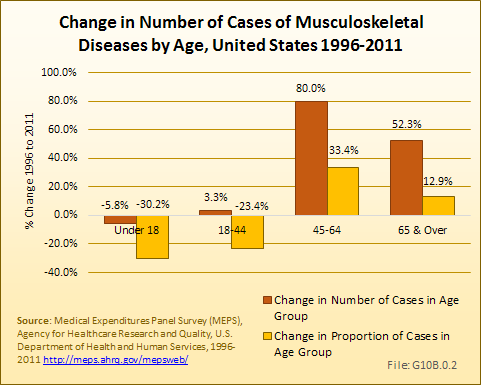

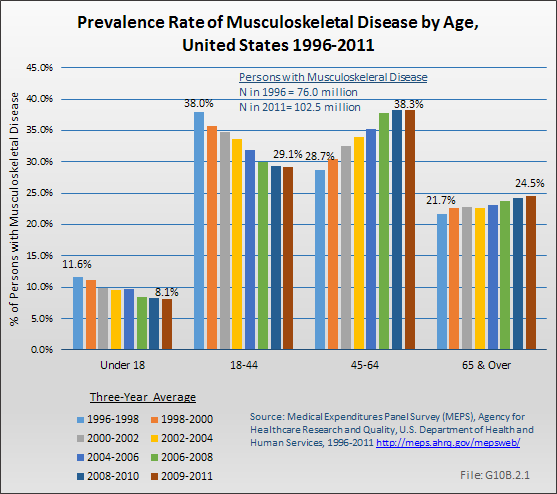


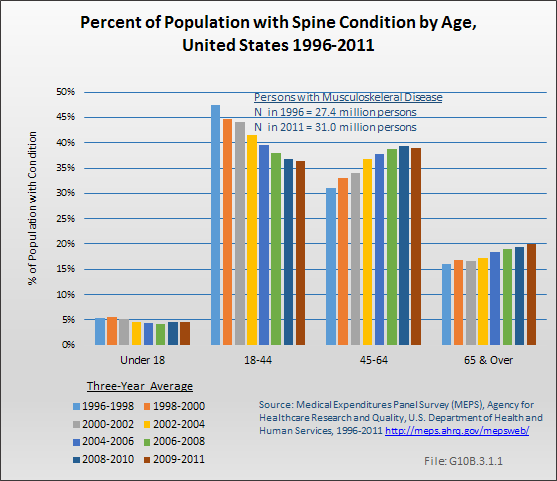
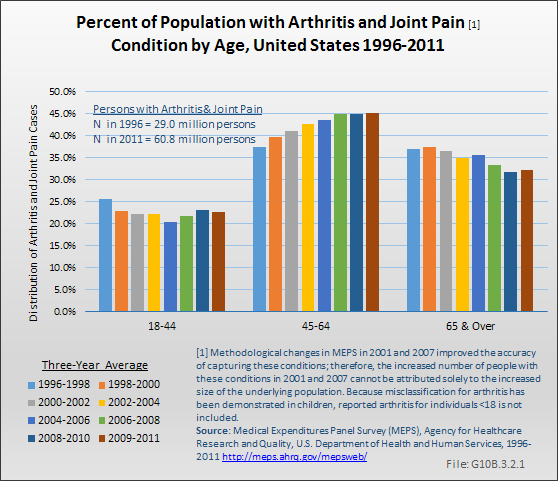

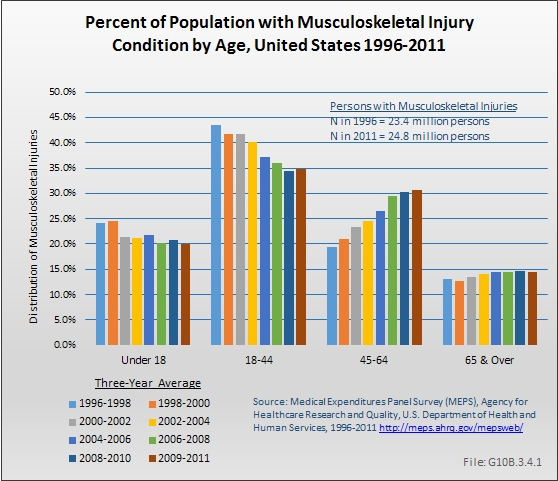
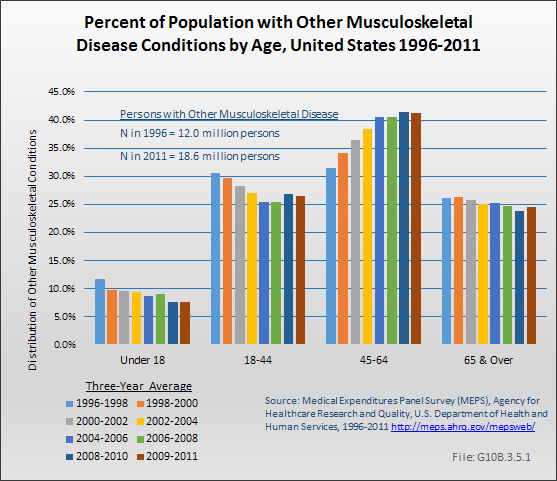
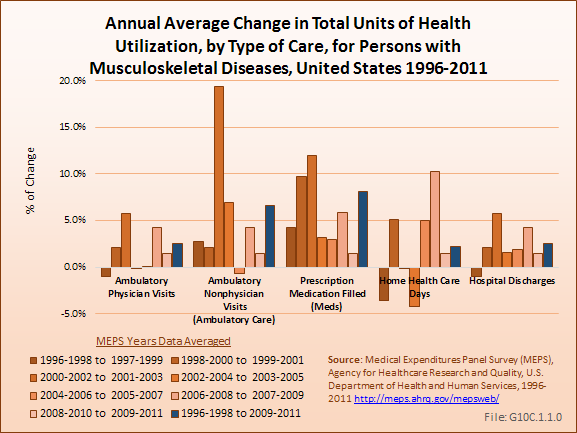
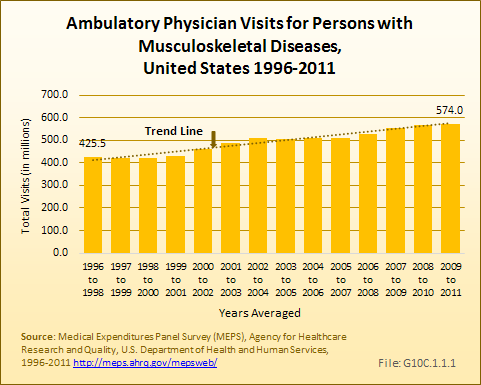
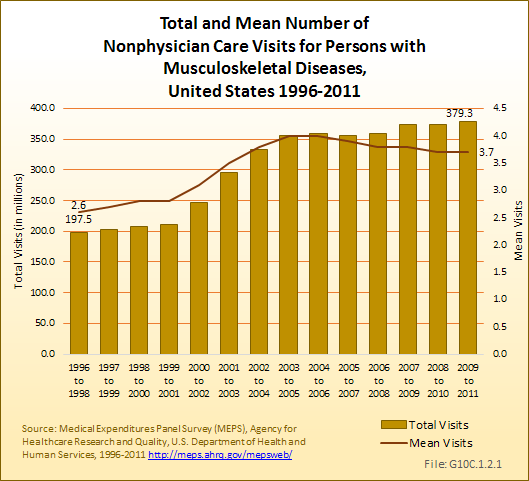
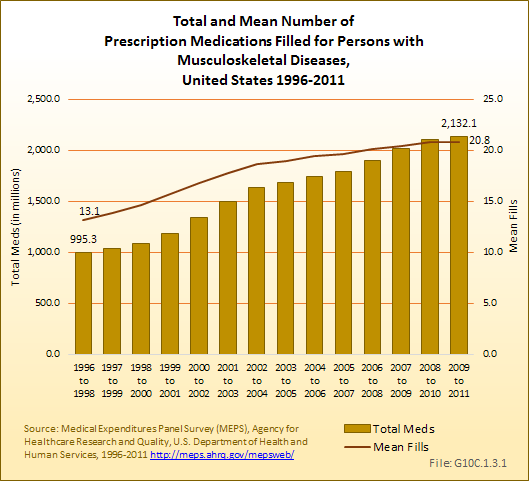
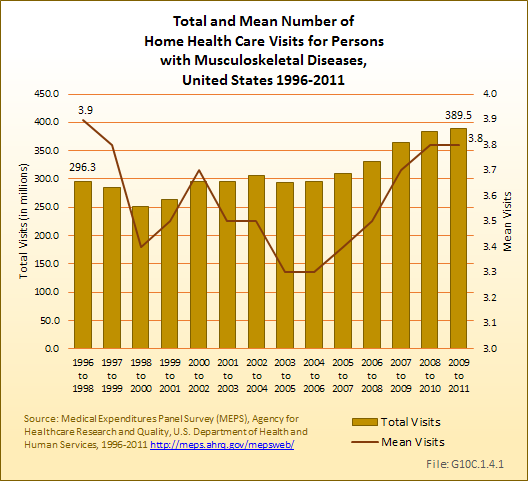
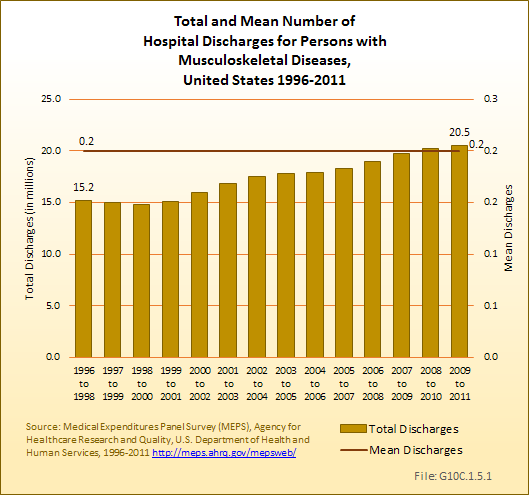


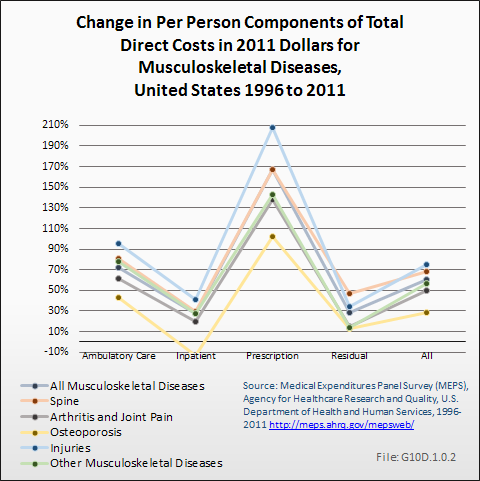
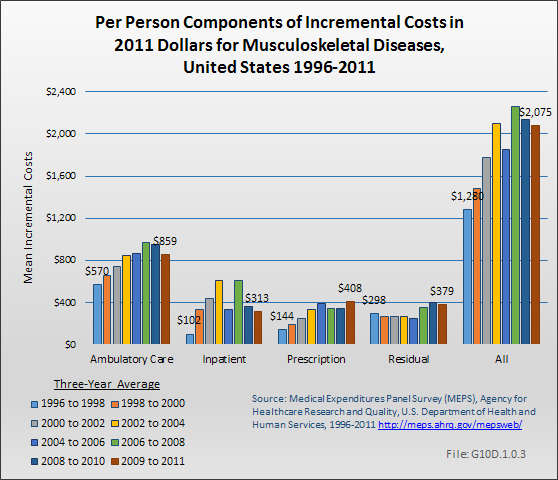

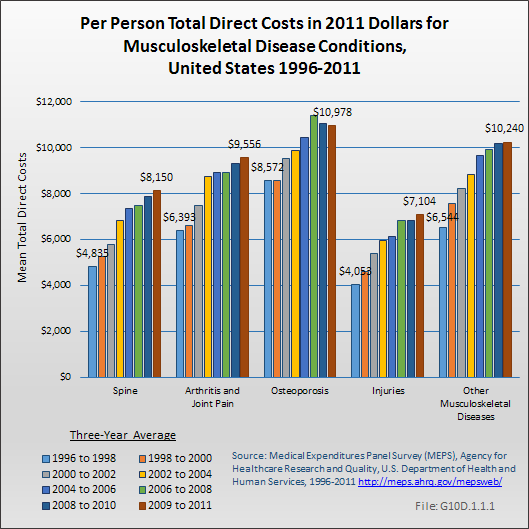
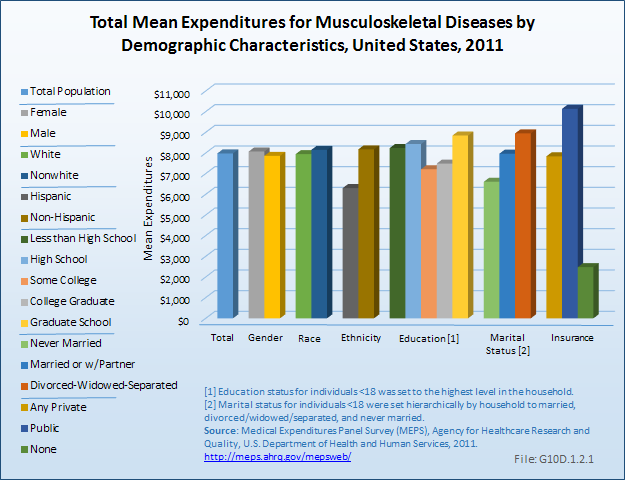
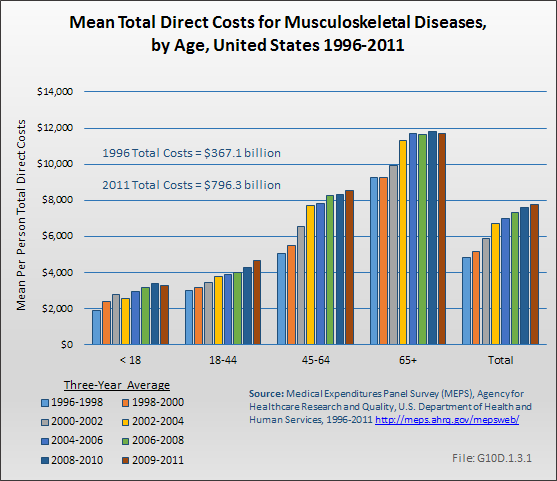
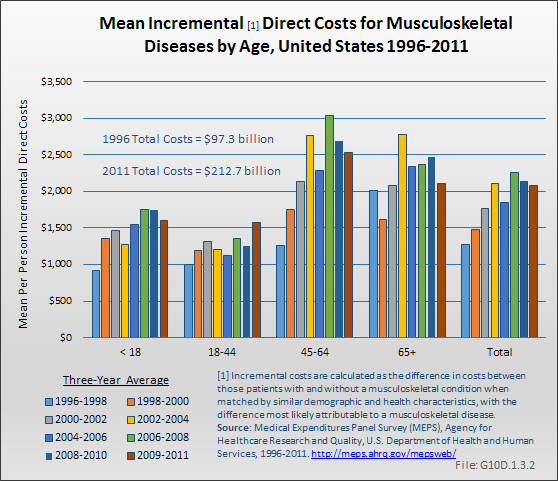


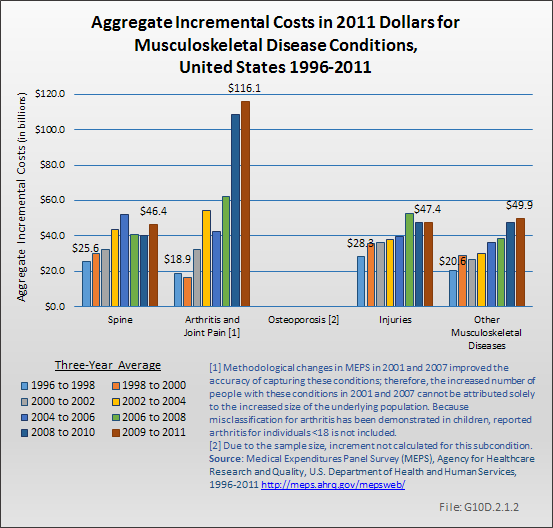
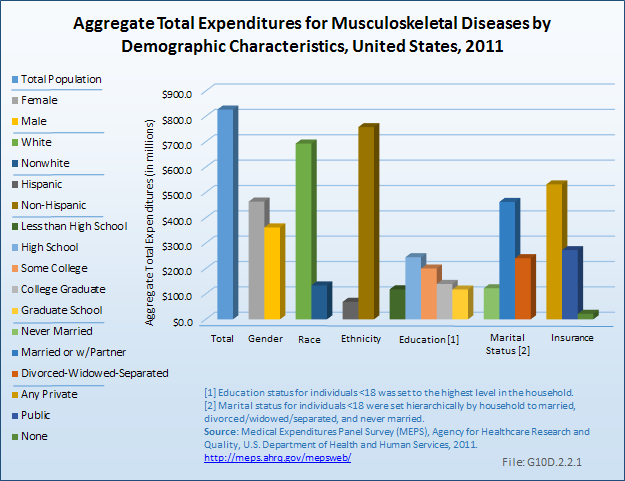


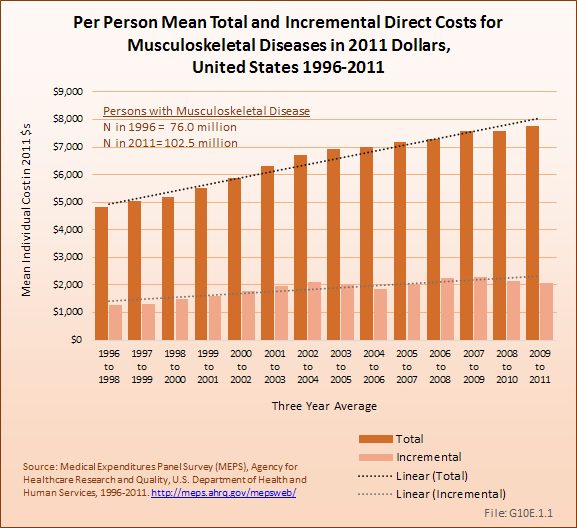


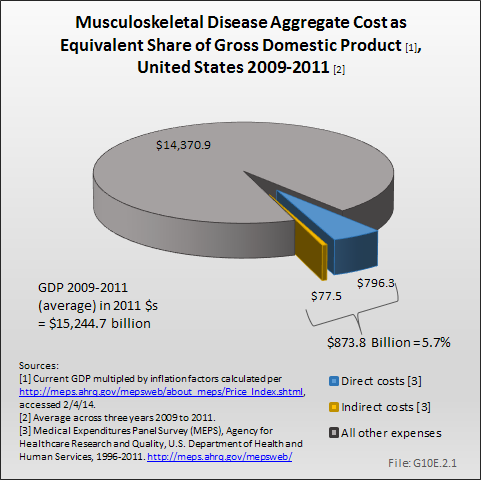
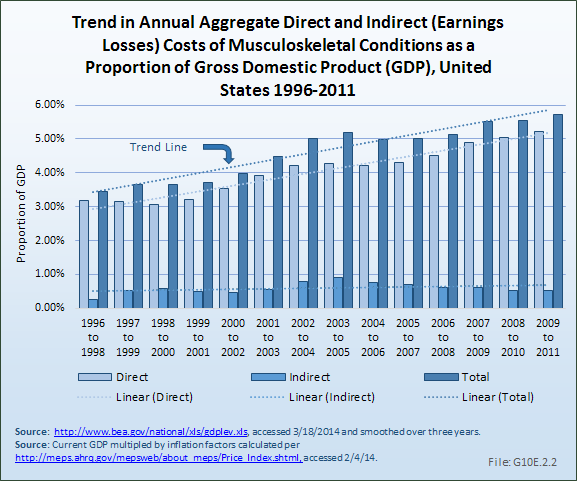

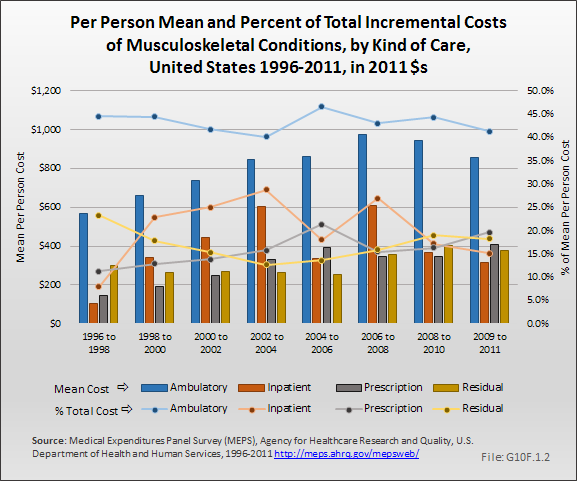
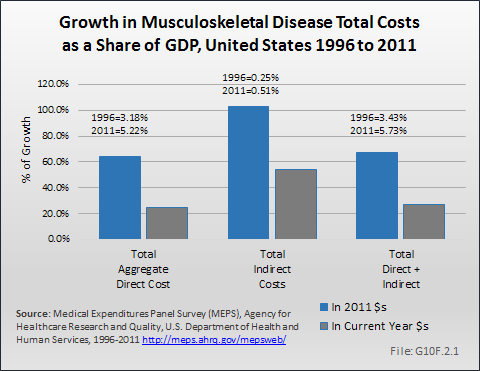
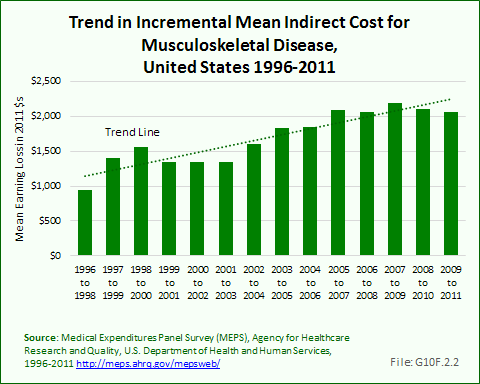

 Download as CSV
Download as CSV







